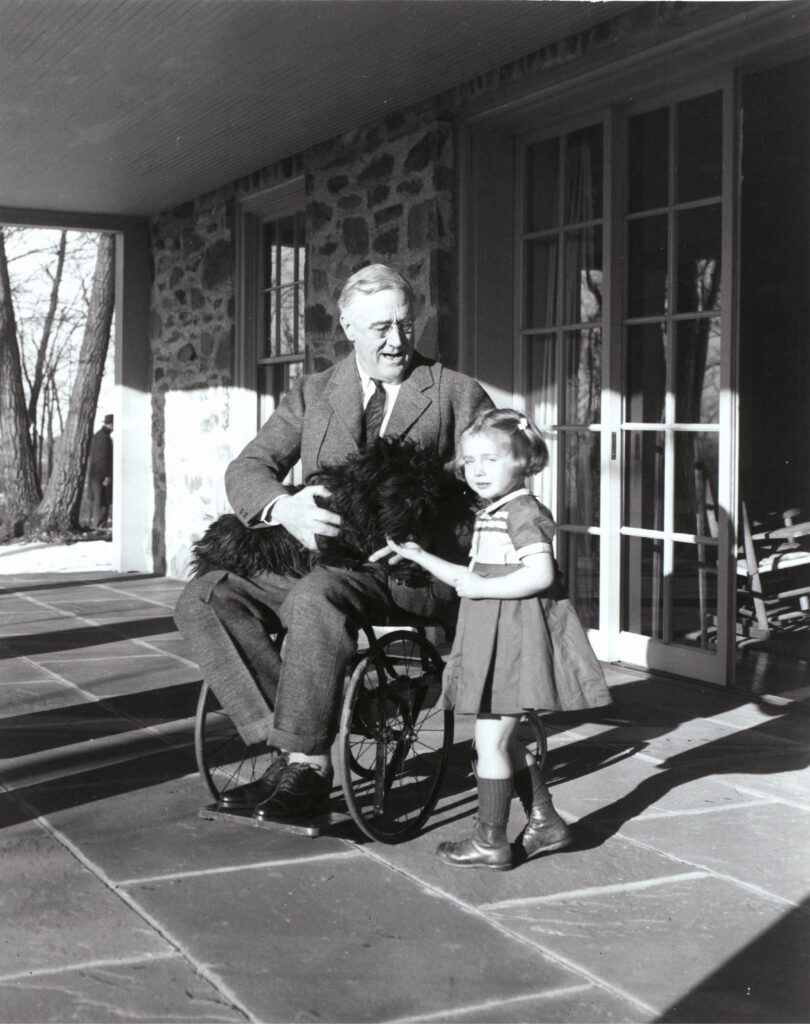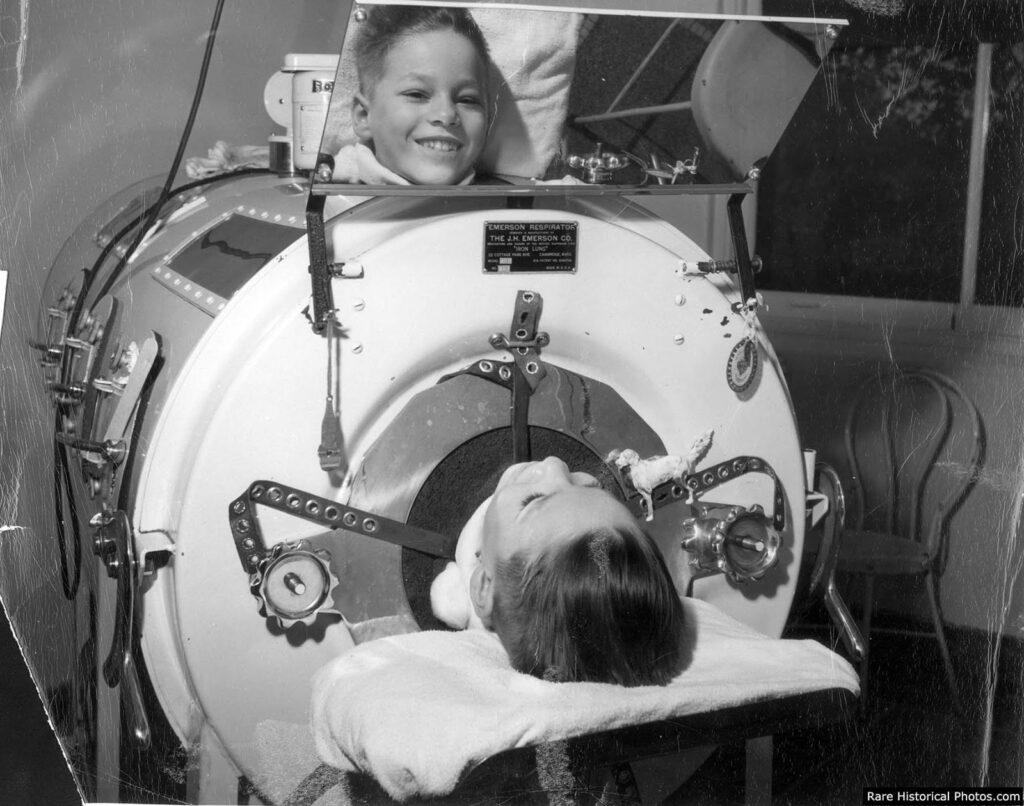What is polio?
Polio (short for poliomyelitis) is an illness caused by polioviruses, which are a member of the broader family of enteroviruses. Enteroviruses can cause a wide spectrum of illnesses. The most common enterovirus-causing illness modern-day parents have heard of or experienced first-hand is Hand, Foot and Mouth syndrome. Other enterovirus-induced symptoms and illnesses range from the “common cold,” throat infections and diarrheal infections to viral meningitis.
Polioviruses can also cause a wide array of symptoms. Mild symptoms of poliovirus infection include fever, headache, sore throat, vomiting, and/or fatigue. Severe illness includes a spectrum of effects on muscles from weakness to partial, or even full, paralysis. Paralysis is the inability to use the muscles.
The face of polio-induced paralysis is Franklin Delano Roosevelt (FDR), our 32nd President. FDR was wheelchair bound from age 39 on due to partial paralysis. His paralysis affected his leg muscles specifically. In addition to paralysis of muscles we use for movement, polioviruses can also cause paralysis of our breathing muscles. Many readers may be familiar with the term “iron lung.” The iron lung was invented in Boston in the 1920s to save the life of a child with polio. An iron lung cycles the pressure inside the chamber to stimulate movement of the chest that mimics the role of the paralyzed diaphragm. In March 2024 one of the last living iron-lung-dependent patients in the U.S., Paul Alexander, passed away. For a longer read on his remarkable life, read this NY Times article by Jesus Jimenez, or Mr. Alexander’s own book “Three Minutes for a Dog: My Life in an Iron Lung.”


AP / Steve & Mary DeGenaro / Boston Children’s Hospital Archive / AARC’s Virtual Museum
How is poliovirus spread?
Transmission is by fecal-oral route or pharyngeal (i.e. throat) secretions. Fecal-oral route means the germ is shed from stool (i.e. fecal) then contaminates water, food or commonly touched surfaces (infected individual doesn’t appropriately wash hands following defecation or changing a dirty diaper, etc.). This leads to ingestion (i.e. oral) by an unsuspecting individual.
How common was polio in the United States before the vaccine?
Before the vaccine, polio would paralyze approximately 10,000 children each year. At its peak in 1952, polio caused approximately 20,000 cases of paralysis, and more than 3,000 deaths. Because of vaccine efforts in the 1950s-1970s, natural polio infection was eliminated from the United States in 1979.
How long has the polio vaccine been around?
The polio vaccine has been available since 1955. Most likely, every parent reading this has themselves been vaccinated against polio. Much of the research for the first polio vaccine was funded by the March of Dimes. The name “March of Dimes” was originally coined by radio personality and fundraising promotor, Eddie Cantor, who said on air: “March of Dimes will enable all persons, even the children, to show our president that they are with him in this battle against this disease. Nearly everyone can send in a dime, or several dimes. However, it takes only ten dimes to make a dollar and if a million people send only one dime, the total will be $100,000.” Within 1 week a “march” of 2.68 million dimes ($268,000) arrived in Washington, D.C., and kickstarted the research funding. Initially founded by FDR to better understand polio and end infantile paralysis, the March of Dimes has grown to become one of the top non-profit organizations “committed to ending preventable maternal health risks and death, ending preventable preterm birth and infant death and closing the health equity gap for all families.”
What type of vaccine is the polio vaccine?
In the United States we administer only inactivated polio virus vaccines. An inactivated polio virus vaccine has no live poliovirus in it, and therefore cannot cause polio. They are administered by injection.
When do children receive the polio vaccine?
It is recommended that infants (children younger than 1 year) receive 3 doses to build their immunity to the point of initial protection. While it can be administered as young as 6 weeks old, Pediatric Associates of Richmond typically gives the polio vaccine at the 2-, 4- and 6-month-old check-ups. A booster dose is administered between 4 and 6 years of age. No further polio vaccine doses are required thereafter.
What are possible side effects of the polio vaccine?
The most common side effect is irritability and fatigue, but if experienced typically last less than 24 hours. Less common are injection site pain, swelling or redness. Fever occurs in only 1%.
What’s the benefit of vaccinating children now that polio has been declared eradicated from the United States since 1979?
There remains no cure for polio, so prevention is key. Through extremely high vaccination rates, smallpox was eradicated worldwide in 1980, and we no longer require smallpox vaccines. We have been close to a similar worldwide eradication of polio, but are not quite there. Efforts continue to help countries like Afghanistan, Pakistan and Nigeria, among others, achieve eradication status. As long as there are pockets of poliovirus being transmitted throughout the world, there is risk for infected travelers to bring the virus to unvaccinated children, adults or communities within the United States. Those who have been fully vaccinated but who have weakened immune systems due to medical conditions like cancer or HIV, or due to medications/treatments for autoimmune conditions or cancer may also be susceptible. We strive to keep the days of preventable deaths and dependence on wheelchairs or iron lungs due to polio in the distant past. Doing so requires continued high immunity rates through the use of our extremely safe and highly effective polio vaccine.
References
American Academy of Pediatrics. [Poliovirus Infections.] In: Kimberlin DW, Banerjee R, Barnett E, Lynfield R, Sawyer MH. Red Book: 2024-2027 Report of the Committee on Infectious Diseases. Thirty-third edition. Itasca, IL: American Academy of Pediatrics; 2024:[682-689]
https://www.uptodate.com/contents/poliomyelitis-and-post-polio-syndrome
https://www.chop.edu/vaccine-education-center/vaccine-details/polio-vaccine
https://www.marchofdimes.org/about-us/mission/history/history-march-dimes
https://www.fdrlibrary.org/roosevelt-pictures
